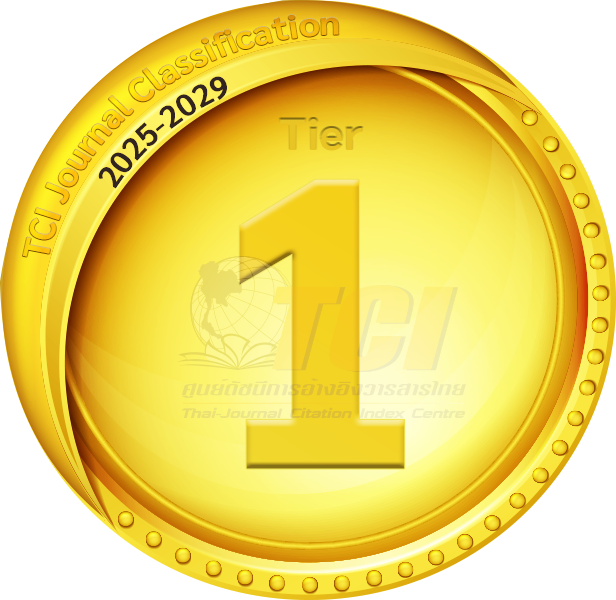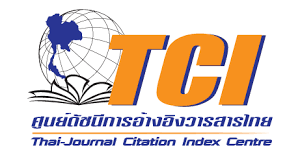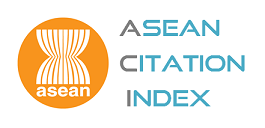Reasons to Code-Switch: A Case Study of Malaysian Twitter Users
- Zulkifli Zufati Izazi, School of Languages, Literacies, and Translation, Universit Sains Malaysia, *Corresponding author, E-mail: zulfati_izazi@yahoo.com
- Tengku Mahadi Tengku-Sepora, School of Languages, Literacies, and Translation, Universit Sains Malaysia
Abstract
As a multicultural and multilingual country, Malaysians often utilize code-switching in daily verbal conversation. This code-switching phenomenon has recently been found to be evident in their written communication throughout the internet, as well. The study in this paper concentrates on the reasons for the employment of code-switching within the context of Malaysian social media users. Information for the study was collected through an online survey distributed through Twitter, a social media platform. The construction of the survey was based on Hoffman’s (1991) and Mustaffa’s (2014) established reasons for code-switching in verbal communication. The findings of the study revealed that ‘the simplicity of the word’ and ‘being accustomed to the habit’ were the most frequent reasons that lead surveyed Malaysian Twitter users to code-switch. The information gained from the study will help provide insight on the reasons why Malaysian social media users employ code-switching in online interactions
Keywords: code-switching, social media, sociolinguistics, Twitter
DOI: 10.14456/rjsh.2020.5
References
Abalhassan, K. M., & Alshalawi, H. G. (2000). Code-switching behavior of Arab speakers of English as a second language in the United States. Intercultural communication studies, 10(1), 179-188.
Al-Qahtani, A. (2014). The phenomenon of code-switching and code-mixing as practiced among faculty members in a Saudi university. Conference on Language Phenomena in Urban Society (pp. 8-15). Surabaya, Indonesia. doi: 10.13140/RG.2.1.3143.1122
Altarriba, J., & Santiago-Rivera, A. L. (1994). Current perspectives on using linguistic and cultural factors in counseling the Hispanic client. Professional Psychology: Research and Practice, 25(4), 388-397.
Bakar, A., & Mohd Mazzalan, A. (2018). Aliran pertuturan bahasa rojak dalam kalangan pengguna facebook di malaysia. E-Academia Journal, 7(1), 62-71.
Baker, C. (2006). Foundations of Bilingual Education and Bilingualism (3rd ed). UK: Multilingual Matters Ltd.
Barton, D., & Lee, C. (2013). Language online: Investigating digital texts and practices. New York, US: Routledge.
Bullock, B. E., & Toribio, A. J. (2009). Trying to hit a moving target: On the sociophonetics of code-switching. Multidisciplinary approaches to code switching, 41, 189-206.
Cheng, L. R., & Butler, K. (1989). Code-switching: a natural phenomenon vs language ‘deficiency’. World Englishes, 8(3), 293-309.
Cheng, K. K. Y. (2003). Code-switching for a purpose: Focus on pre-school Malaysian children. Multilingua, 22(1), 59-77.
Crystal, D. (1987). The encyclopedia of language. Cambridge, UK: Cambridge University Press.
David, M. K. (2003). Role and functions of code-switching in Malaysian courtrooms. Multilingua, 22(1), 5-20.
David, M. K., Kuang, C. H., McLellan, J., & Fatimah, H. (2009). Functions of Code-Switching in the family domain in Malaysia. Retrieved from https://pdfs.semanticscholar.org/a9df/ab241ee683ecc708efaf3e33131263c6fa6c.pdf
Gal, S. (1979). Language Shift: Social Determinants of Linguistic Change in Bilingual Austria. New York, US: Academic Press.
Gal, S. (1988). The political economy of code choice. Codeswitching: Anthropological and sociolinguistic perspectives, 48, 245-264.
Gumperz, J. J. (1982). Discourse Strategies. Cambridge, UK: Cambridge University Press. doi:10.1017/CBO9780511611834.
Hadei, M., Kumar, V. C., & Jie, K. S. (2016). Social Factors for Code-Switching-a Study of Malaysian-English Bilingual Speakers. International Journal of Language and Linguistics, 4(3), 122-127.
Halim, N. S., & Maros, M. (2014). The functions of code-switching in Facebook interactions. Procedia-Social and Behavioral Sciences, 118, 126-133.
Heredia, R. R., & Altarriba, J. (2001). Bilingual language mixing: Why do bilinguals code-switch?. Current Directions in Psychological Science, 10(5), 164-168.
Herring, S. C., & Androutsopoulos, J. (2015). Computer-mediated discourse 2.0. The handbook of discourse analysis, 2, 127-151.
Hoffman, C. (1991). An Introduction to Bilingualism. New York, US: Longman.
Hoogervost, T. (2015). Malay youth language in West Malaysia. Youth Language in Indonesia and Malaysia. NUSA, 58, 25-49.
Java, A., Song, X., Finin, T., & Tseng, B. (2007). Why we twitter: understanding microblogging usage and communities. Proceedings of the 9th WebKDD and 1st SNA-KDD 2007 workshop on Web mining and social network analysis (pp. 56-65). California , US.
Kachru, B. B. (1978). Toward structuring code-mixing: An Indian perspective. International journal of the sociology of language, 1978(16), 27-46.
Kuang, C. H. (2006). Signs of becoming bilingual: A study of a Malaysian child under two. Language Choices and Discourse of Malaysian Families Case Studies of Families in Kuala Lumpur, Malaysia, KL: SIRD.
Lefever, S., Dal, M., & Matthiasdottir, A. (2007). Online data collection in academic research: advantages and limitations. British Journal of Educational Technology, 38(4), 574-582.
Ling, L. Y., Jin, N. Y., Tong, C. S., & Tarmizi, M. A. A. (2012). Code-Switching in Sepet: Unveiling Malaysians’ Communicative Styles. British Journal of Arts and Social Sciences, 6(2), 1-28.
Mahmor, N. A., Ahmad, F., & Mansor, N. (2014). Kerancuan bahasa: Cabaran dalam pendidikan negara dan pembinaan negara bangsa. Code mixing: Challenges in education and nation building. Seminar on National Resilience (SNAR 2014), Premiera Hotel, Kuala Lumpur.
Maros, M., Noorizan, N. D. M. M., & Zakaria, A. A. I. (2016). Code-switching as the medium of solidarity in ‘Ola Bola’. Jurnal Komunikasi: Malaysian Journal of Communication, 32(2), 1-28.
Meng, A. (2019). What is Pinterest, and How Does it Work. Infront Webworks. Retrieved December 10, 2019, from https://www.infront.com/blog/what-is-pinterest-and-how-does-it-work/
Moss, L. (2020). How the Internet has changed the way we speak. MNN - Mother Nature Network. Retrieved February 14, 2020, from https://www.mnn.com/green-tech/computers/stories/how-the-internet-has-changed-the-way-we-speak
Myers-Scotton, C. (1989). Codeswitching with English: types of switching, types of communities. World Englishes, 8(3), 333-346.
Mustaffa, S. R., Ariffin, R. M. R., & Said, N. S. (2014). Kekeliruan jati diri punca bahasa bercampur aduk. Jurnal Bahasa, 14(1), 134-158.
Nadzri, N. S. M., & Hassan, H. (2013). The language identities of Malaysians as portrayed in Upin and Ipin. Sains Humanika, 65(2), 109-114.
Omar, A. (1982). Language and society in Malaysia. Kuala Lumpur, Malaysia: Dewan Bahasa dan Pustaka.
Othman, N. (2006). Current trends in pronoun usage among Malay speakers. In Tenth International Conference on Austranesian Linguistics. Puerto Princesa City, Palawan, Philippines. Retrieved from https://pnglanguages.sil.org/resources/archives/25743
Panayiotou, A. (2004). Switching codes, switching code: Bilinguals’ emotional responses in English and Greek. Journal of multilingual and multicultural development, 25(2-3), 124-139.
Rusli, W. N. S. S. W., Shaari, A. H., Zainuddin, S. Z., Shi, N. L., & Amin, A. S. (2018). Intra and Intersentential Code-switching Phenomena in Modern Malay Songs. 3L, Language, Linguistics, Literature, 24(3), 184-205.
Sebba, M., & Wootton, T. (2013). 1 We, they and identity: Sequential versus identity-related explanation in code-switching. Code-switching in conversation (pp. 270-297). Abingdon, UK: Traver & Francis groups.
Seong, T. K. (2007). Seminar Bahasa Rojak: Kecelaruan Penggunaan Bahasa Melayu.Motivasi untuk Percampuran Bahasa/Bahasa Rojak. Kuala Lumpur: Dewan Bahasa dan Pustaka dan Persatuan Bahasa Moden Malaysia. Retrieved from http://jurnalbahasa.dbp.my/wordpress/wp-content/uploads/2014/08/4-Bahasa-Rojak.pdf
Setiawan, D. (2016). English Code Switching in Indonesian Language. Universal Journal of Educational Research, 4(7), 1545-1552.
Stapa, S. H., & Begum Sahabudin, N. N. (2016). Functions of code-switching: A case study of a mixed Malay-Chinese family in the home domain. Pertanika Journal of Social Sciences & Humanities, 24, 181-194.
Sulaiman, S. H., bin Rahim, M. I., & Yahaya, M. H. (2013). Malaysians perception on code-switched advertisement. Journal of Academia, 3, 66-76.
Tabaku, E. (2014). Code-switching: Beliefs and Attitudes of Albanian pre-service English teachers. Journal of educational and social research, 4(2), 384-389.
Thirusanku, J., & Yunus, M. M. (2014). Status of English in Malaysia. Asian Social Science, 10(14), 254-260.
Thye, T. S. S. L (2014). Bahasa rojak bukan budaya kita. Utusan Malaysia. Retrieved August 5, 2018 from http://www.utusan.com.my/rencana/bahasa-rojak-8232-bukan-budaya-kita-1.15866
Susteren, E. V. (2020). Eliminate survey fatigue: Fix 3 things your respondents hate! SurveyMonkey. Survey Monkey. Retrieved February 14, 2020, from https://www.surveymonkey.com/curiosity/eliminate-survey-fatigue-fix-3-things-respondents-hate/.

Indexed in


Search